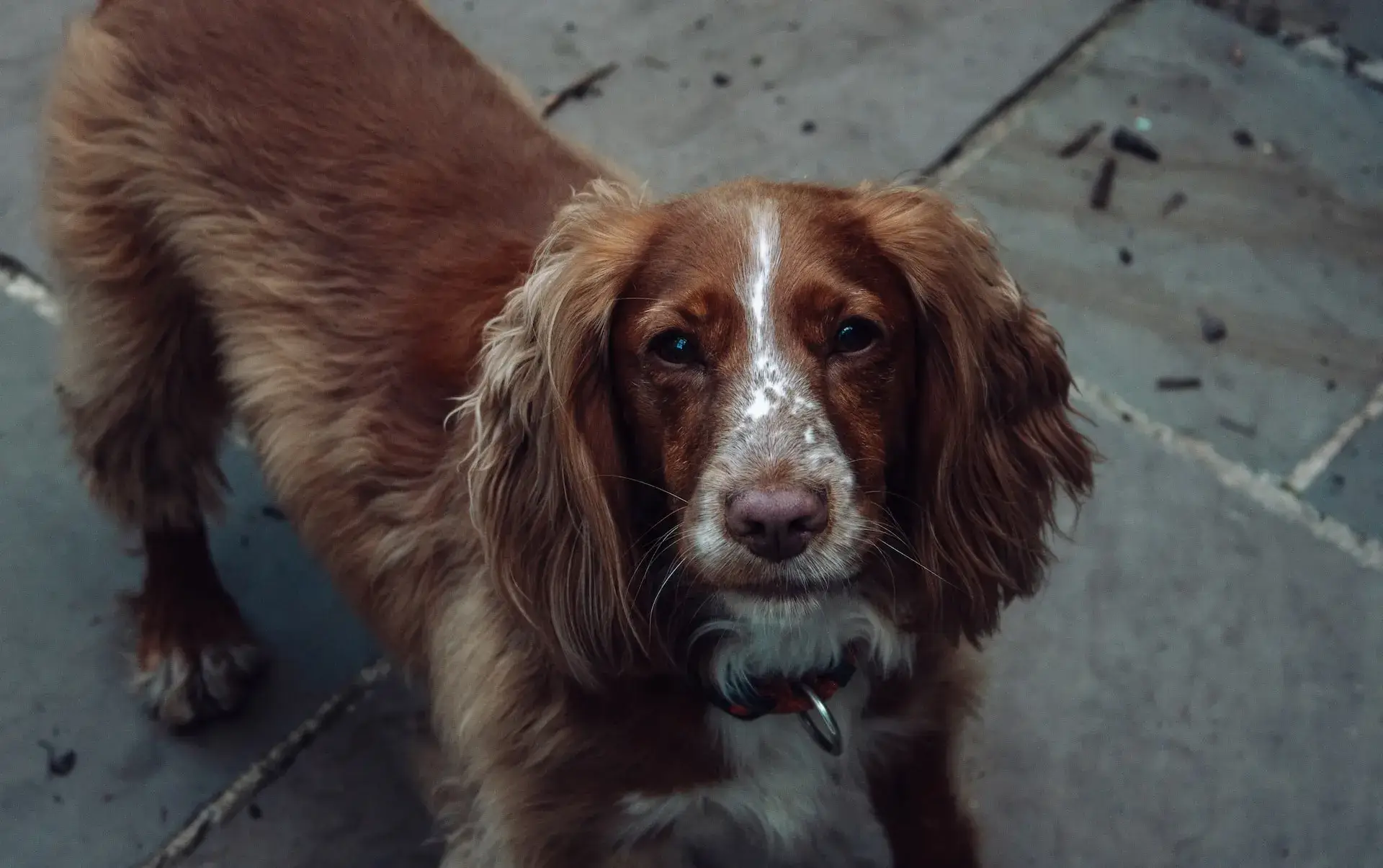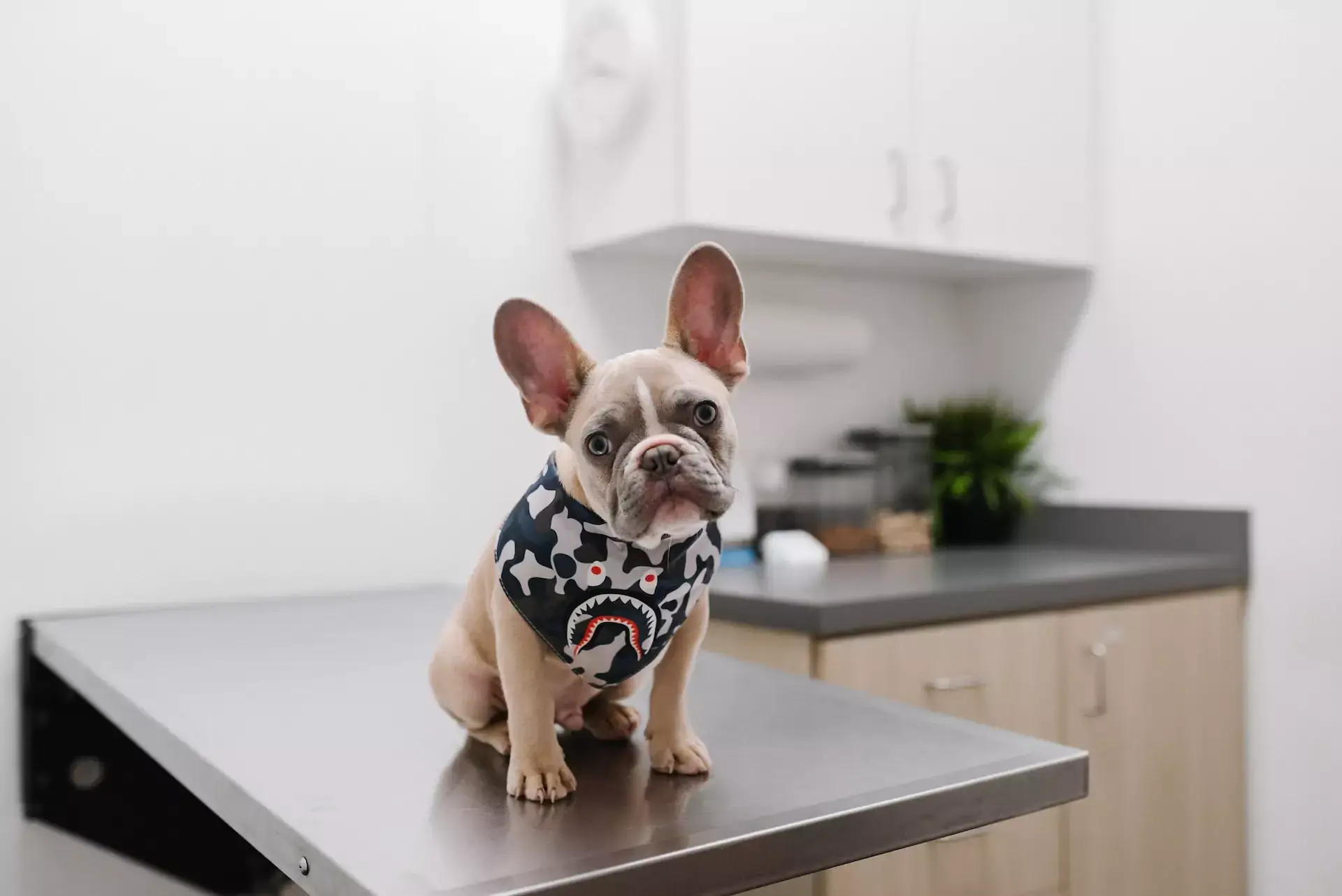Did you know that as many as 90 percent of dogs over the age of three have gum disease? Fido can suffer from a variety of different dental issues as well. These include misalignments, abscesses, infections, and cracked or broken teeth. Dental care is a very important part of your furry pal’s overall care regimen. Unfortunately, it’s often overlooked. Brushing your dog’s teeth doesn’t have to be hard or time-consuming, and it certainly isn’t expensive, but it can have a drastic effect on Fido’s oral health. A local Bayfield County WI veterinarian offers some information on brushing your furry pal’s choppers in this article.
Are You Supposed To Brush Your Dog’s Teeth?
Brushing is just as beneficial for Fido as it is for us. Brushing helps remove food particles and plaque, which in turn can keep tartar from developing. That’s extremely important! As with people, tartar buildup goes hand in hand—or in this case hand in paw—with gum disease. As tartar builds up, it starts to push below the gums. This eventually creates little pockets, which are havens for bacteria. Over time, the infection will lead to the loss of gum tissue and bone loss.
This isn’t just about aesthetics. Gum disease has been linked to some very serious medical issues, such as heart disease. That’s because the infection can travel from your pet’s mouth to his vital organs.
How Do I Teach My Dog To Get Used To Having His Teeth Brushed?
As mentioned above, this will be easiest if you start while little Fido is still young. The ideal option is for your puppy to grow up just thinking this is part of being a dog. However, you can still teach an adult to accept the toothbrush. It just may take longer.
At first, just gently rub your dog’s teeth and gums with your finger. Do this while you’re petting him, so he learns to equate it with getting affection. Then, compliment your pooch and offer him a yummy treat.
The next stage is to incorporate some doggy toothpaste. Put a little on your finger or the toothbrush. Again, offer treats and praise.
Do this every day for a while, til your pup is used to it. If you want, at this point you can move on to using Fido’s toothbrush.
What If My Dog Won’t Tolerate Having His Teeth Brushed?
At the end of the day, this really isn’t something you can force. You don’t want to get bit, or make your canine pal wary of being touched! Even the sweetest dog can get uneasy about things like that. If your pup just isn’t having it, there are other things you can do to keep his choppers clean.
These include:
- Dental Rinses
- Dental Flakes
- Dental Chews
- Dental-Formula Food And Treats
Here’s a quick tip: Try putting doggy toothpaste on a Nylabone. Then, just let your pet have at it!
How Often Should I Clean My Dog’s Teeth?
Ideally, Fido should have his teeth brushed twice a day. However, even once a day is fine. You don’t even have to do your pet’s whole mouth at once. Just do one quadrant, and keep rotating. Your canine buddy will still benefit! Once you and your pup have this down, it should only take a minute or two.
What Percentage Of Dog Owners Brush Their Dog’s Teeth?
Definitely not as many as we’d like. Estimates from Ipsos, which conducted a poll on the topic, show that only about eight percent of dog owners brush their pet’s teeth.
Fido is doing better than Fluffy here, though: only about four percent of kitty owners brush those choppers. (To be fair, cats usually aren’t very cooperative with this.)
Can I Use Human Toothpaste On My Dog?
That would be a hard no on this one. Many of our toothpastes contain things that aren’t safe for Fido, such as birch sugar (xylitol). Plus, your canine buddy will probably really appreciate having a toothpaste that was made to suit him. Many doggy toothpastes come in flavors Fido likes, such as chicken or beef. You’ll have a much easier time of it if your cute pet actually likes his toothpaste!
Similarly, you should never use a human toothbrush on Fido. They aren’t angled the right way for his mouth. Use a doggy toothbrush instead. You can also get thumb toothbrushes, if that’s easier.
Is It Too Late To Start Brushing My Dog’s Teeth?
From a physical standpoint, it’s really never too late. However, this is going to be much easier if Fido is still a puppy. Once your pet is an adult, it will be harder. Training, of course, is key here, but you don’t want to try to force the issue. If you’ve adopted an adult pooch that just isn’t having it, you may do better using other methods we mentioned above, such as dental flakes. Ask your Bayfield County WI vet for specific advice.
How Can I Tell If My Dog Has Dental Problems?
Fido can’t tell you if his teeth hurt, so you’ll need to keep an eye out for red flags.
Here are some of the common ones:
Drooling
We know, some dogs are, well, rather slobbery by nature. If you have a Saint Bernard, you can probably expect Fido to be a bit sloppy. However, if your canine buddy isn’t normally drooly, but has suddenly started leaving puddles on the floor, there could be a dental issue going on. Ropy or bloody drool can also be a red flag.
Bleeding Gums
You may not notice the blood on your dog’s gums. Look for red smears on Fido’s toys, dishes, and chews. Bleeding gums are often a sign of dental issues, such as gum disease.
Tartar Buildup
Does your pup have brown or yellow gunk buildup on his teeth? If so, he may need a good deep cleaning, at the very least. This will allow the gums to heal and hopefully reattach.
Bad Breath
Man’s Best Friend has many wonderful qualities, but minty-fresh breath doesn’t usually make the list. However, your pet’s breath shouldn’t kill houseplants, either. Extremely bad breath can be a sign of doggy dental woes. It’s also sometimes an indication of other medical issues. Ask your vet for more information on this.
Swelling Of The Mouth, Face, Head
While all of these should be taken seriously, swelling is particularly concerning. This typically indicates some sort of infection, which is extremely dangerous so close to the brain.
Reduced Interest In Play
Fido uses his mouth to play, so it probably stands to reason that dental issues can seriously dampen his love for his favorite activities. If your furry pal suddenly doesn’t seem very interested in playing Fetch or Tug-of-War, he may have doggy dental woes.
Changes in Eating Habits
Chewing on a sore tooth isn’t much fun. You may notice your pet takes longer to finish their dinner than they used to. Fido may also dribble food out of the side of his mouth. Dogs with dental issues sometimes show a marked preference for softer food and treats. In severe cases, they may not eat much at all. This of course can cause serious health issues.
Grumpiness
As anyone who has ever had a toothache can attest, dental problems are not much of a mood boost. Your furry pal may seem uncharacteristically morose. He may also withdraw, and go off by himself rather than hanging out with his humans.
Make An Appointment At Your Bayfield County WI Pet Hospital
Do you have questions about your dog’s health or care? Do you know or suspect that your canine companion has dental trouble? Contact us, your local Bayfield County WI hospital anytime!




